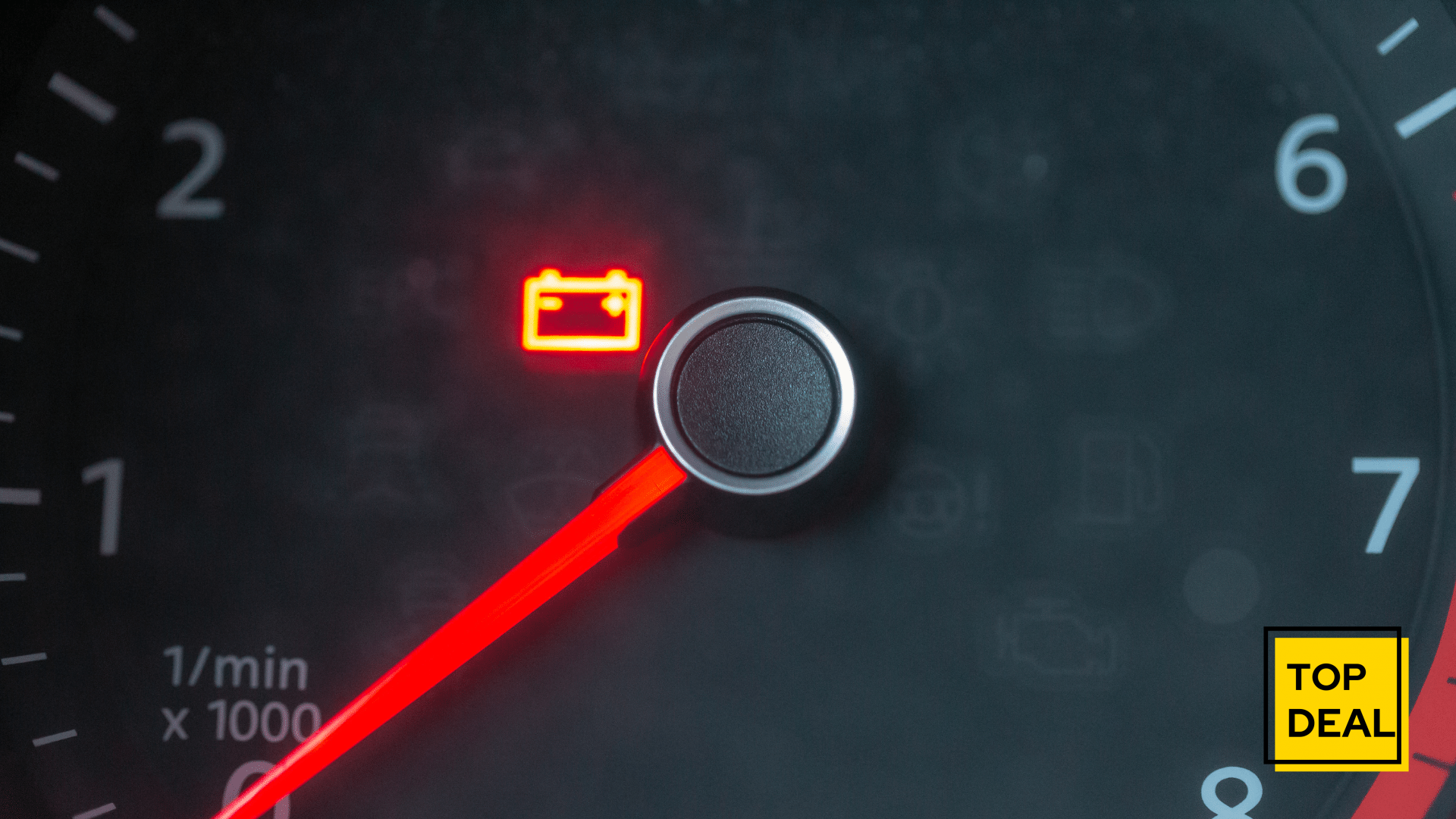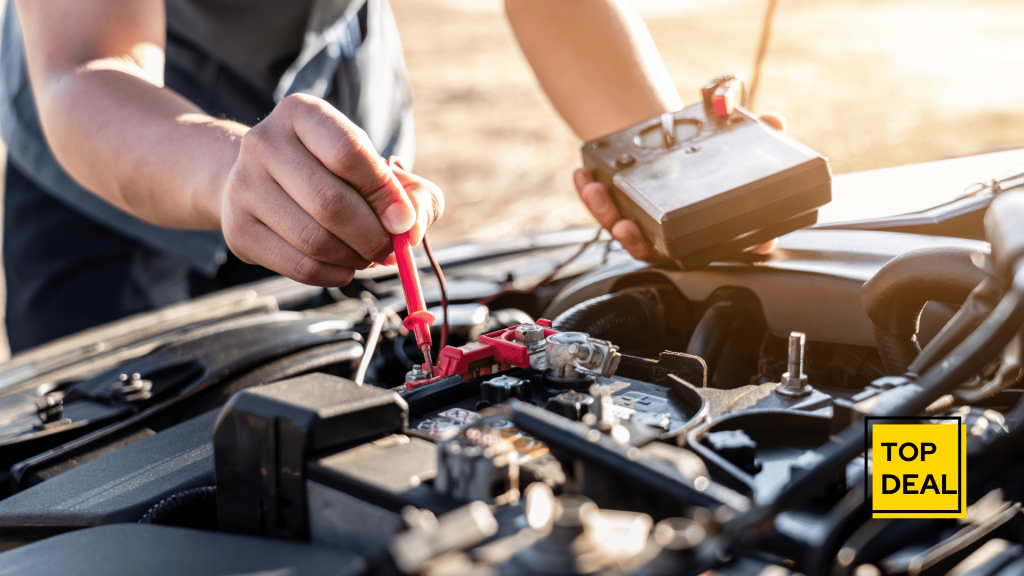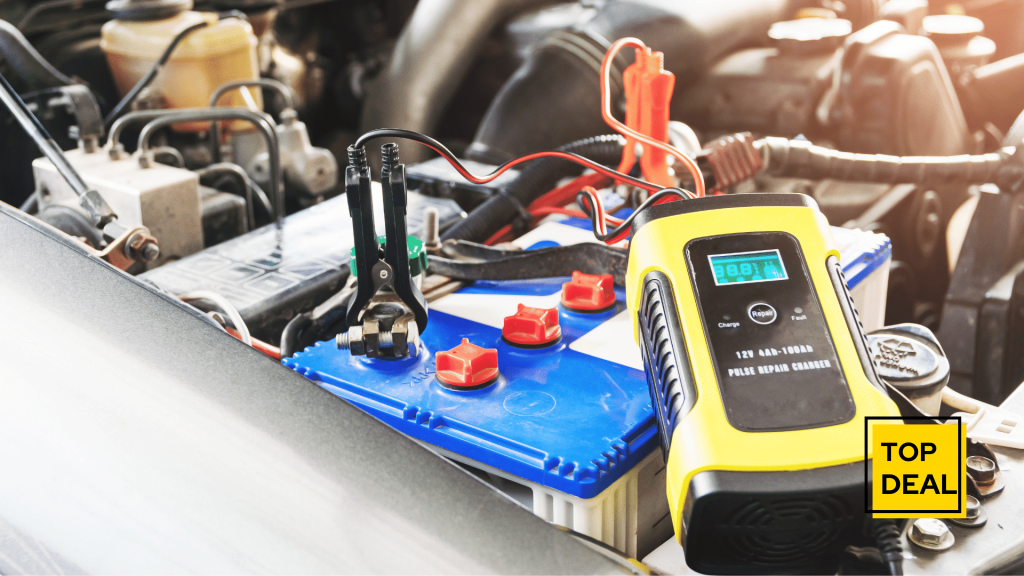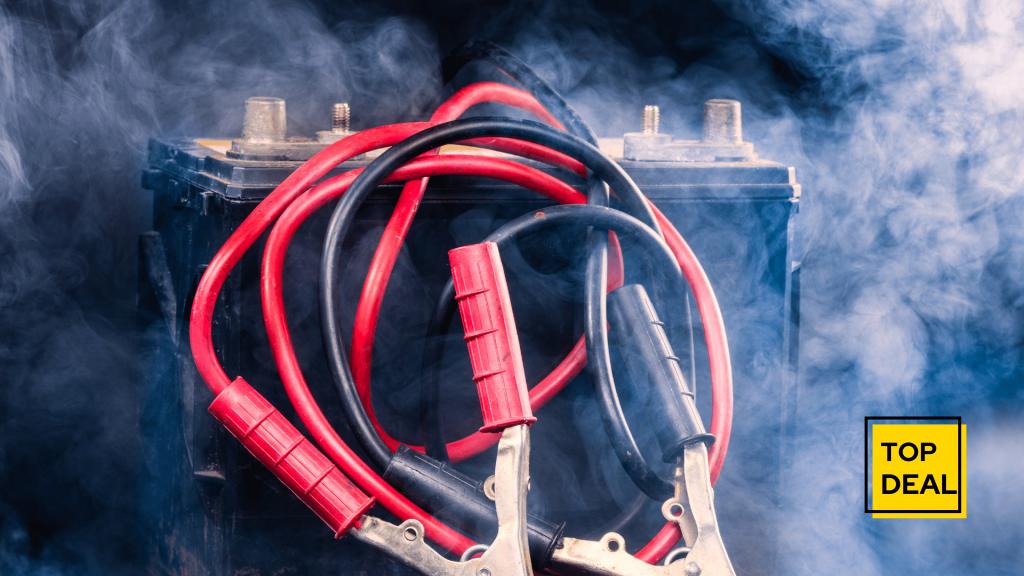
The Best Car Battery Chargers Of 2021!
With winter on the doorstep, some of us with cars are about to get nasty battery surprises. With the colder weather, most batteries lose their charge quickly and some can even fail. If you don’t have a car battery charger or a new battery, your car might be stranded and leave you hanging when you need it the most.
In this article, we’ll discover how a car battery charger works and what features to look for when buying one. We’ll also go through reviews of the best car battery chargers available today as well as some useful tips you should follow before attempting to jump-start a dead battery yourself.
Table of Contents
Getting Started

The first thing you need to know is that there are three types of vehicle batteries: the standard lead-acid kind, the lithium-ion type, and nickel-metal hydride. Standard lead-acid batteries have been around for a long time and remain popular mostly because they’re cheap. The ions move from the negative electrode plate to the positive electrode plates via a sulfuric acid solution which stores energy by a chemical reaction between the electrodes and electrolyte. While these batteries require constant maintenance to keep them in shape they’re durable and can last 6-7 years before you need to replace them.
Lithium-ion batteries are fairly new on the market and come with many advantages. They discharge energy faster than a lead-acid battery, charge quickly (usually within 2 hours), and remain at a consistent voltage until nearly discharged which is great if you plan to use your car for long drives where you don’t have time to stop for 10 minutes to recharge it. Unfortunately, Li-Ion batteries are also very expensive which puts most people off choosing this option when purchasing a new battery. If you do decide to go with lithium-ion, make sure that the battery charger being used has an automatic shut-off feature that switches power off when the battery is fully charged.
Nickel-metal hydride batteries are very similar to the Li-Ion type but have a shorter lifespan. They’re also smaller and require much less maintenance so they’re cheaper to run in the long run. They don’t discharge energy quickly though so if you plan on using your car for long drives, you’d be better off getting a lead-acid battery because it takes only 6 hours or so to charge compared to 12 with NiMH batteries.
How Does A Car Battery Charger Work?
Car battery chargers can come in many different forms like stationery (plug into an AC wall socket) or portable (usually equipped with its own set of recharging cables), each designed to serve specific purposes. Stationary chargers are very useful if you own a car but barely use it. Instead of draining the battery, they keep it charged at all times and can be used as backup power at home or in the office. Portable chargers work best for people who don’t have time to wait around for their batteries to charge or those whose cars don’t turn on even after charging (a sign that the battery has reached its end and is dying).
A typical portable charger is made up of three parts:
1 – A set of rechargeable batteries that store electrical energy while plugged into an AC wall socket or while connected to your car. If you’re using AC power, make sure you choose a model with an automatic switch feature that shuts off when fully charged to avoid damaging your vehicle’s electronics.
2 – A smart chip that monitors the charging voltage level and switches it on/off automatically while regulating the current flow to prevent overheating or overcharging. If you’re using a car charger, some models come with an additional feature that checks for open circuits before sending power to your battery which can save you from making very costly mistakes.
3 – A cooling fan that expels excess heat produced by the batteries while they charge. You should make sure this part is sturdy enough because it comes in contact with electricity throughout the process especially during overcharging when temperatures rise greatly. Read our guide on how to properly clean any electrical component if you want more details on this subject.
Ways To Use Your Car Battery Charger
Car battery chargers can be used in numerous ways. They all work the same way but some are more effective than others depending on your needs and budget so it’s up to you to choose what suits you best or if possible, get two of them. Below is a list of the most common ways people use car battery chargers:
As a backup power source for homes and offices where a stable power supply is hard to find. Even though emergency generators have become very popular in recent years, they have their downsides too which range from being really tough to maintain for less experienced DIYers to noise production that could disturb neighbors, especially when using portable generators during emergencies. Car batteries offer all the benefits of emergency generators plus they’re much cheaper to operate in the long run, that’s why it’s recommended that you get a stationary charger to keep your battery charged always.

As a backup power source for pedestrians who are on the go all day every day because car batteries don’t require much maintenance and can also be used indoors (that is if they’re able to recharge using an AC wall socket). As previously mentioned, portable chargers should only be used when camping or during emergencies because of their slow charging speed which might not be suitable for people who need power instantly.
To charge smaller devices like cellphones, tablets, etc. It’s recommended that you use this option sparingly since car batteries aren’t meant to provide full charges before recharging themselves. Also, keep in mind that some batteries should only be partially charged to avoid damage and other types like AGM or Gel should never be discharged below a certain level or they might stop working for good.
To jumpstart your car if the battery has died without any warning. You won’t have to spend hundreds of dollars at the mechanic’s shop just for this simple task since most models come with clamps that you can use during emergencies. Instead of buying a new battery, you can try fixing it after following our guide on how to jumpstart any 12V car battery.


